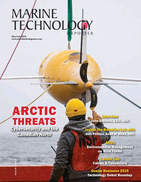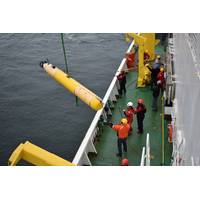
MBARI Research Supports Cryospheric Science
for DNA Observations (FIDO) allow researchers to collect and study eDNA in remote environments. Earlier this year, MBARI, in collaboration with the Australian Antarctic Program, sent ESP and FIDO instruments on the research icebreaker Nuyina on an expedition to the Denman Glacier region in East Antarctica to evaluate applications for this eDNA technology in the Southern Ocean
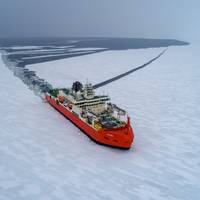
Denman Glacier Has Already Lost Over 250 Billion Tons of Ice
The Denman Glacier is one of the largest and fastest-melting glaciers in East Antarctica and alone holds a potential sea level rise of 1.5 meters.In nearly three decades, the 20-kilometer (12-mile) wide glacier has already retreated some five kilometers (nearly three miles) and lost over 250 billion tons of ice.The deepest point on continental Earth has been identified under the glacier. This ice-filled canyon reaches 3.5km (11,500ft) below sea level. Only in the ocean are there deeper ones. The canyon (known as the Denman Trough) is mostly cut off from the sea due to all the glacial ice inside and
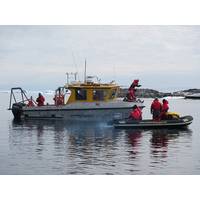
Australian Scientists Study the Antarctic
now further examine the data to determine the relationships between the shape and composition of the seafloor and what lives there. This information can then be used to better manage this unique environment. Marine geoscientist Dr. Alix Post participated in a voyage to the Sabrina Coast region of East Antarctica on board the RV Investigator. The voyage, led by Macquarie University, completed the most extensive hydrographic survey in East Antarctica to date and collected long sediment cores that contain a rich archive of climate information. In addition, the survey completed detailed assessments of benthic
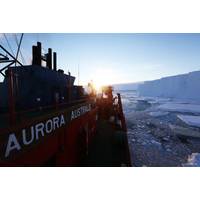
Expedition to Study Ocean’s Role in Glacial Melting
want to use this voyage to learn more about the pathways that bring this warm water up from the deep ocean.” “Understanding the physical processes driving heat delivery to the glacier will give us insights into how the system might behave in the future, and which other parts of East Antarctica could become vulnerable.” The researchers will measure ocean properties using conductivity, temperature and depth (CTD) profilers lowered from the ship. Further work during the voyage will look at ocean processes in the Mertz Glacier region, where a 78-kilometer-long
Antarctica’s Ross Sea Gets Protection
set aside more than 1 million square kilometres of the Ross Sea in recognition of its incredible scientific and biodiversity values. CCAMLR committed to creating a system of marine protected areas in the Southern Ocean in 2009 and has been discussing the creation of MPAs in the Ross Sea and East Antarctica for several years. Claire Christian, director of the Antarctic and Southern Ocean Coalition, said “ASOC is thrilled to see that CCAMLR has protected 1.55 million square km of the Ross Sea, 1.12 million square kilometers of which will be fully protected with the remaining area designated
Adélie Penguin Population Doubles
Adélie penguin populations in East Antarctica have almost doubled over the past 30 years, according to research published in PLOS ONE today. Australian Antarctic Division seabird ecologists, Dr Colin Southwell and Dr Louise Emmerson, alongside colleagues from Australia, France and Japan, found that the five main regional populations of Adélie penguins in East Antarctica have increased by 69 per cent since 1980. The team used aerial photographs and ground-based observations to count Adélie penguins during recent summer breeding seasons at 99 sites located along 4500 km
AOA Calls for Southern Ocean Conservation Commitments
, director of The Pew Charitable Trusts’ global penguin conservation program. “Two hundred years after discovering the continent, Russia can lead member countries to a consensus decision on establishing large and permanent marine protections in the Ross Sea and the waters off East Antarctica.” The two-week CCAMLR meeting precedes December’s 21st Session of the Conference of the Parties to the United Nations Framework Convention on Climate Change (COP21). COP21 will be a crucial conference, as it needs to achieve a new international agreement on the climate
Record Decline of Greenland & Antarctic Ice Sheets
hit the headlines in July 2013. Back then AWI scientists reported that a table iceberg as large as the area of Hamburg had broken off the tip of its ice shelf. But whereas both the West Antarctic Ice Sheet and the Antarctic Peninsula, on the far west of the continent, are rapidly losing volume, East Antarctica is gaining volume – though at a moderate rate that doesn’t compensate the losses on the other side of the continent. The maps and results of this study are published in 'The Cryosphere', an open access journal of the European Geosciences Union (EGU). Source: Alfred Wegener Institute
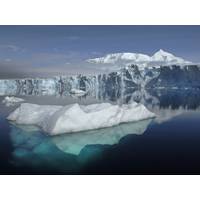
Scientists Say Antarctic Glaciers in 'Irreversible' Thaw
of this planet will have a larger and larger role in sea level rise in the decades ahead," said Sridhar Anandakrishnan, professor of geosciences at Pennsylvania State University, who was not involved in the study. Last week, another study also suggested a part of the far bigger ice sheet in East Antarctica may also be more vulnerable than expected to thaw. The IPCC says it is at least 95 percent probable that warming is caused by human activities, led by the burning of fossil fuels. Monday's study, to be published in the journal Geophysical Research Letters, adds to signs of climate change
 February 2025
February 2025


